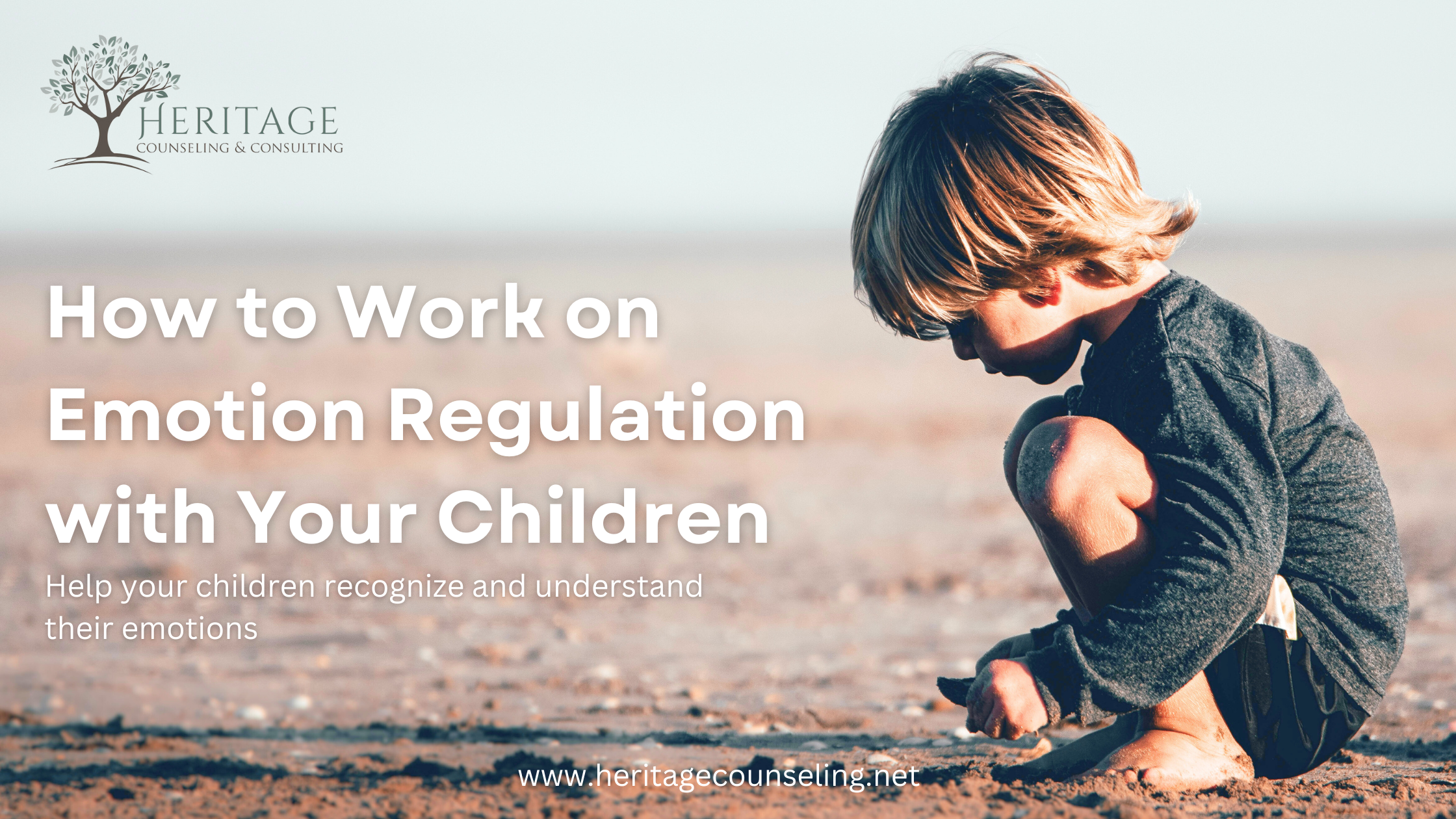What is Emotion Regulation?
Emotion regulation is the process that allows a child to notice, identify, and manage their emotions. During infancy, babies form attachment bonds with their caregivers based on the responsiveness they receive to getting their physical needs met in addition to receiving support with regulating their emotions. As children grow, they develop an increased ability to identify and regulate their emotions more autonomously. The first three years of a child’s life is a critical period for them to begin to develop emotion recognition and regulation skills, however, the development of emotional regulation for kids is an ongoing process that takes time and practice throughout childhood.
Signs of Poor Emotion Regulation in Children
Many factors may contribute to a child’s ability to regulate their emotions. Internal factors, such as temperament and genetics, in addition to external factors, such as the child’s environment and life experiences all may impact their ability to regulate their emotions. Factors that may predispose or put your child at risk for having increased challenges with emotion regulation include a history of trauma, attachment disruptions or an insecure attachment style, and baby colic during infancy.
Outward externalized behaviors such as emotional meltdowns, excessive crying, tantrums, decreased academic performance, low frustration tolerance, angry outbursts, and physical aggression are often indicators that your child is experiencing emotional turmoil. If your child experiences intense negative emotions for long durations of time, challenges with talking about their feelings, and difficulty accepting regulatory support from others, they are likely exhibiting signs of poor emotion regulation.
Ways to Help Your Children With Their Emotions
- Make naming emotions a regular practice: Emotion identification is the fundamental first step to building emotion regulation skills. Your child must build awareness of how they feel before they can learn tools to work through those feelings. Caregivers can model noticing and naming their own emotions such as sharing how happy they felt when they received a hug from their child or how disappointed they felt when they accidentally burnt the cupcakes they were baking. When caregivers name negative emotions they experience, such as sadness or frustration, it helps normalize that all feelings are okay, while also providing a window of opportunity for the caregiver to be able to share how they work through those challenging feelings with their child. In addition to modeling, caregivers may also utilize various visual tools, interactive games, and emotional regulation activities, such as an emotion chart, books about feelings, and feelings charades to help prompt their child to verbalize their emotions. When your child is resistant to using their words to express how they are feeling, caregivers can offer non-verbal alternatives, such as prompting their child to draw a picture of how they are feeling or act it out with toys.
Validate emotions and establish safety: Children with a secure attachment relationship with their caregivers can regulate their emotions more effectively. Caregivers can provide emotional security by maintaining a warm demeanor and consistently meeting their child’s emotional needs through providing comfort, validation, and active listening. To validate your child’s feelings, you can simply tell them that all of their feelings are okay to have. To help your child feel heard, you may echo the child’s language and reflect it back to them.
Connect before you correct: The key is to help your child calm before requiring them to work through or process their feelings. Helpful tips for building a connection with your child during dysregulation include getting down on their level, remaining calm, and reminding them that you are there to help them.
Practice co-regulation prior to expecting self-regulation: The most significant way a caregiver can help their child regulate their emotions is to act as a “co-regulating partner.” Co-regulation occurs when a caregiver builds a connection with their child by being present with them through dysregulation. Techniques for co-regulation include modeling, teaching, and practicing emotional regulation activities alongside your child. With practice, your child will eventually learn to self-regulate and practice regulation skills more autonomously.
Start simple. Focus on deep breathing: A caregiver can engage in deep breathing to synchronize the child’s breathing with theirs which helps promote feelings of relaxation. The caregiver may pair guided imagery with deep breathing to encourage the child to participate in the deep breathing exercise. For example, the caregiver may tell their child to imagine they are blowing up a balloon as they take each deep breath or imagine that they are blowing out birthday candles. For younger children, a caregiver may give their child bubbles to blow to help familiarize them with deep breathing. The caregiver can encourage their child to notice how they create a bigger bubble when they take a slower breath. This helps them build awareness of their breath.
Incorporate physical movement: Engaging in physical movement can help release emotional stress. The Mayo Clinic reports that, “physical activity may help bump up the production of your brain's feel-good neurotransmitters, called endorphins” and further suggests that, “exercise can provide stress relief for your body while imitating effects of stress, such as the flight or fight response, and helping your body and its systems practice working together through those effects.” Child-friendly movement exercises that may help promote regulation include yoga, stretching, running, dancing, jumping, or tossing a ball back and forth.
Create an “emotion regulation toolkit”: To create an emotion regulation toolkit, place tangible objects and emotional regulation activities into a bin your child can access to help them regulate such as fidgets, stress balls, stuffed animals, an emotion chart, a journal, and headphones. To supplement this, you may create a “calm-down corner” in your home to store the emotional regulation activities. This provides a way to direct your child to a safe place to go when they’re experiencing dysregulation with their regulation tools readily available. It is often helpful to identify a “calm-down corner” with their familiar emotional regulation activities in the child’s school setting as well as to promote generalization of the skills across their settings.
When To Seek Help
It is incredibly common for children to experience challenges with emotion regulation. In fact, all children can benefit from learning skills to help them identify and work through their emotions.
If your child struggles with emotion regulation, seeking mental health support can be life-changing. If your child’s inability to regulate their emotions is interfering with their learning, socialization, family relationships, sleep, health, or other areas of their functioning, it is a critical time to seek out support from a mental health professional. Mental health support during childhood can help shape the trajectory of improved emotional wellness throughout their life.
Heritage Counseling and Consulting has therapists who specialize in treating children and adolescents through providing counseling and play therapy. Child-focused therapy is largely centered around building emotional regulation for kids. To learn more about how trained professional counselors at Heritage Counseling and Consulting can help partner with caregivers to improve their child’s emotion regulation and overall mental well-being, we invite you to call 214-363-2345.
Sources

